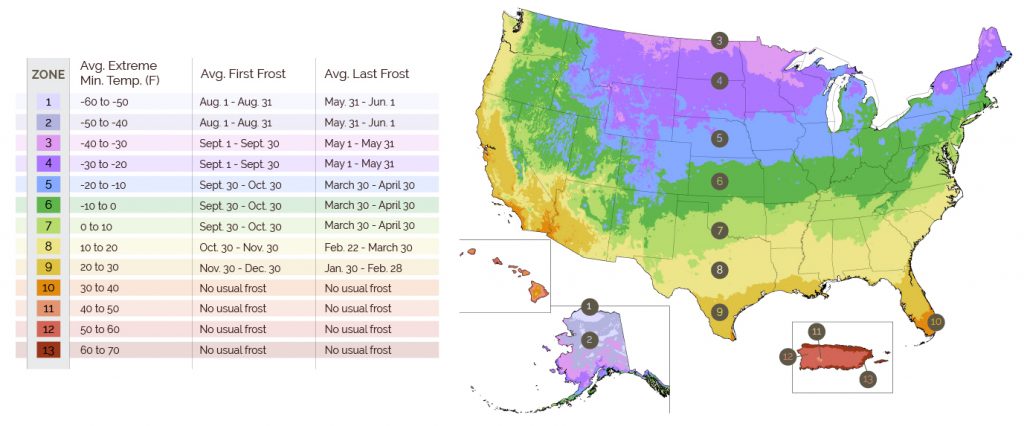Frost Dates Explained
Garden like a pro with helpful tips and guidance from the experts at Eden Brothers. Learn how to plant your seeds and bulbs using our guides and resources.
Why Frost Dates Matter
An area’s frost date refers to the average date of the last frost in spring or the first frost in fall or winter. Frost occurs when the air temperatures drop to freezing, which is 32° Fahrenheit (0° Centigrade). Nonetheless, frost can still happen when the air temperatures are slightly above freezing. Frost has the potential to harm young and recently planted plants, as well as the new growth on established plants. It most definitely impacts the timing of harvesting.
When to Plant
To ensure the success of your tender or warm season plants, it is essential to plant them after the last frost date in spring or before the first frost in fall or winter. Knowing the last and first frost dates in your region is crucial before you embark on planting your garden, as this will allow you to plant at the optimal time.
Keep in mind that the dates given on our map are estimates based on historical climate data and are not exact. Draw on your own personal experience, talk to your local gardening center or your neighbors to help determine the average frost dates in your particular area. Keep a year-to-year gardening journal where you can record daily highs and lows on the cusps of spring and fall to get even closer to those dates.
Take Extra Precaution
With all this in mind, there is one extra precaution that we suggest. This entails proceeding with the assumption that the last frost date in spring will occur approximately two weeks later than the calculated date, while the first frost date in fall will happen around two weeks earlier than the estimated date. By taking this precaution, you can better prepare and protect your plants from potential frost damage.
Locate your Zone & Average Frost Dates
Find your location on this map for a great start to understanding when you’ll be frost free!
